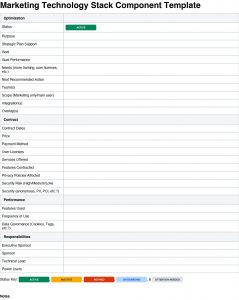 How to Develop an Effective Affiliate Marketing Strategy
How to Develop an Effective Affiliate Marketing Strategy
A few months ago we published a post that focused on the ins and outs of how affiliate marketing works.
A compelling point made in the post was that, if managed properly, affiliate marketing can bring in up to 10-20% of online revenue and have an ROI among the highest of any online channel.
There’s no question that marketing through the affiliate channel can be a boon for sales, brand awareness, average order value, site visits, and conversions. However, if not developed and managed well, companies can be faced with off-brand messaging, fraud, and flat new customer growth, among other issues.
Most potential downsides can be avoided altogether – if the affiliate program is developed with an effective affiliate marketing strategy from the outset.
While not a panacea for any and all issues that might arise, the following tips are essential for companies and their CMOs to carefully consider prior to implementing an affiliate marketing program.
- Determine and clarify overall business goals for starting an affiliate marketing program. Is the goal to drive incremental sales, increase overall revenue, or work with smaller long-tail affiliates with a niche audience? In affiliate marketing, each would require a different approach.For example, incremental sales efforts are usually focused on gaining new customers, so the strategy is likely to involve working with new and innovative publishers, as well as content bloggers. You will need to provide affiliates with new customer-only offers and employ sufficient technology to measure new customer acquisition. Whereas, if the goal is to drive an increase in overall revenue through the channel, then it’s about attracting anyone and everyone and the strategy is likely to involve working with coupon and loyalty affiliates with a larger reach.
- Evaluate the competition. For continuity, it’s important that your affiliate program is in line with what competitors are doing – especially with regard to commission rates, cookie lengths, and affiliate demographics.Commission rates: If your competitors are paying out a 10 percent commission to their affiliates, then it’s wise that you do something similar. It’s also important to allow yourself some flexibility to perhaps pay VIP affiliates slightly more if your ROI goals support doing so.Cookie lengths: When a reader clicks on an affiliate’s link, do you want their cookie to track for one day? Seven days? Thirty days? While the industry standard is thirty days, that doesn’t necessarily mean that it applies to your business model (e.g. flash sales). A competitive analysis will help you determine what will work best for your company and business goals.
Affiliate type: As noted in Affiliate Marketing 101: Part 1, most affiliate marketing programs are comprised of coupon sites, loyalty sites, content bloggers, and even nontraditional affiliates, such as schools, nonprofits, apps, and individual professionals. It’s important to consider what types of affiliates you want to be associated with and what makes the most business sense. For example, if you don’t offer coupons and your goal is to build a program with affiliates that produce high-quality content, then removing coupon sites from your list is a rational strategy.
- Don’t boondoggle your budget. What is your budget for commission payouts? Above and beyond that, what is your budget for additional exposure (affiliate events, commission bonuses, giveaways, product reviews, paid placements, etc.)? While not necessary for every affiliate marketing program, recognizable, well-established companies are likely to see positive results in spades if they allocate resources for additional exposure.
- Contemplate your creative needs and resources. Like other marketing channels, affiliate programs require creative assets. Does your creative team have the resources to create banners and the capacity to redo them on a regular basis to ensure that creative is fresh? At a bare minimum, it’s highly recommended to update creative on a quarterly basis so that it reflects the site’s current look and feel and doesn’t get stale and disenchanting for affiliates. Many affiliates also appreciate it when banners are updated for sales or promotions as it makes it easier to share the information with their readers.
- Think about technology. You’ll want to have a technology team that can implement and update the network’s tracking pixel. A tracking pixel is 1×1 pixel placed on the checkout page so that, when a cookie is set, the pixel will pick up information from that cookie and report it back to the network. The type of information you want the pixel to acquire is also important. For example you might want to know if someone is a new or returning customer, if a coupon code was used, what the coupon was used for, what the product SKU was, etc. A dedicated technology team can also make creating and updating a product data feed a breeze.
Getting a rock-solid strategy in place will help position you for success when you’re ready to start your affiliate marketing program. Look for helpful tips and strategies related to that topic in a future post!
(207)







